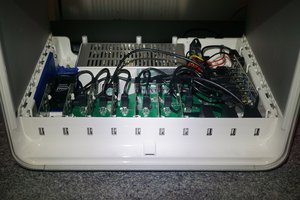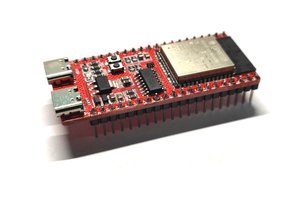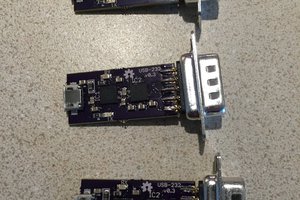The actual circuit is a by-the-book implementation of the Cypress Semi CY7C65213 USB UART chip. This chip was chosen because its USB facade is a standard USB CTC device, which means that no proprietary device drivers are required for it to work (FTDI's continuing weaponization of their device drivers maintains their status as an industry pariah).
The USB specification requires the ground and shield to be connected on the host end of the cable. While completely disconnecting them on the device end is the original recommendation of the spec, it's not a terrible idea to instead add a high impedance and slightly capacitative path between the two. The high impedance gets in the way of ground loops and the capacitative path allows for some amount of EMI shunting.
The USB specification also requires the target (if bus-powered) to not draw excessive current prior to enumeration and during suspend. The CY7C65213 conveniently supplies a !POWER pin to allow gating the supply for target circuitry. We use a P channel MOSFET to turn the SAO power pin on and off. In addition, we can allow hot-swapping of the SAO by adding a hot-swap controller to prevent inrush current on the target from screwing with the badge's power bus. The AP-2331 is my preferred tool for that job, and is immediately after the MOSFET. The 2331 also acts as a current limiter, and will enforce the SAO power limit of 1.1 millihorsepower.
Since both the power and signal levels of the SAO standard are 3.3 volts, we include an LDO to drop the USB 5V supplied to 3.3 volts for the SAO and the VCCIO pin of the UART chip. There are a pair of LEDs for TX and RX, and a pair of resistors in the TXD and RXD lines for a little bit of EMI control and static desensitizing.
And that's about it.
In addition, this project houses an RS-232 converter SAO. That's nothing more than a MAX3232 chip, which is a TTL/LVTTL to RS-232 level converter and charge pump supply capable of running on 3.3 volts. It has an edge-mounted DB-9M for the RS-232 end and should work with any serial-enabled badge.
 Nick Sayer
Nick Sayer
 Paul Nicholls
Paul Nicholls

 Sebastian Krzyszkowiak
Sebastian Krzyszkowiak